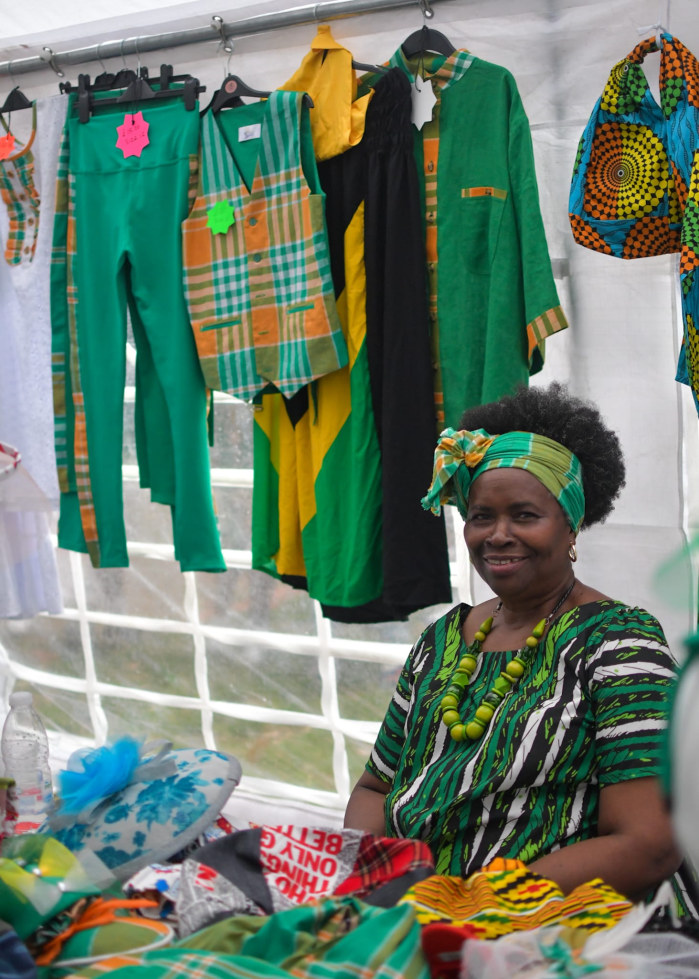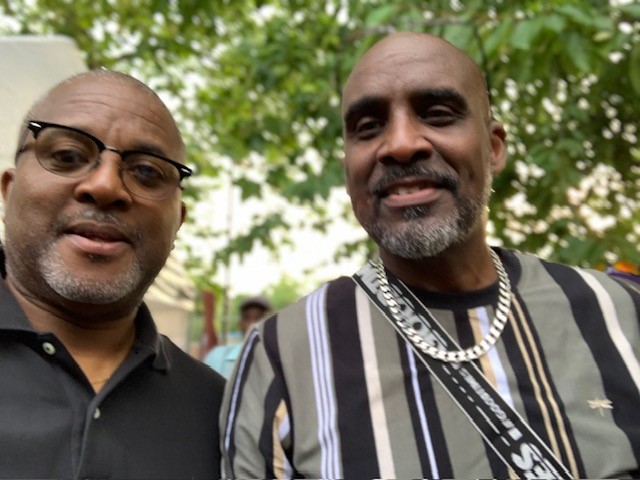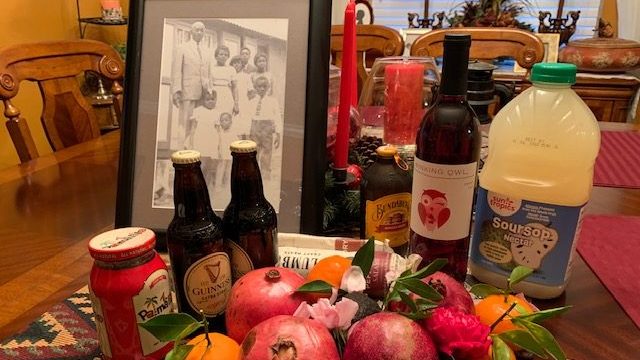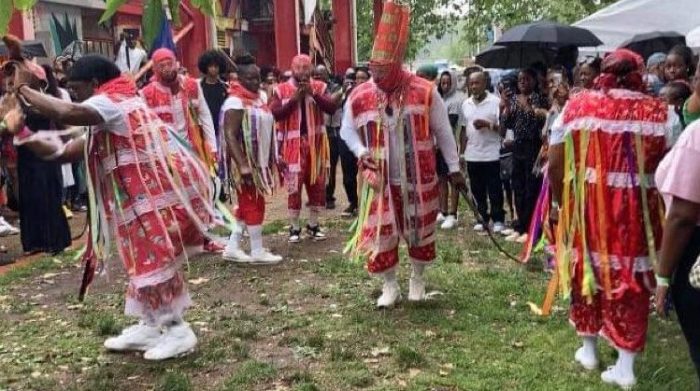LONDON — Summer is a time for outdoor festivals and carnivals, especially for Caribbean folks living abroad. Whether here in London or New York, Toronto or Atlanta, these gatherings of exiles are about much more than the music and the food. They are bazaars of memory.
The occasion is about experiencing home in unexpected places. This is the chronic dilemma of immigrants and exiles. Wherever we may live, the yearning for home resides with us. Events, like the Montserrat Heritage Festival, the giant Notting Hill Carnival, the Toronto Caribbean Carnival in Toronto, Labor Day in Brooklyn, New York, are medicine for our souls.
In her 2018 book, Tamarind Seeds, poet Myrle Roach, one of thousands forced to leave Montserrat by the Soufrière Hills volcano eruptions in 1995, writes, “We long for your evergreen hills where your sons and daughters were free to roam, because it was our home.”
Showing my papers: A Caribbean immigrant’s journey to becoming an AmericanRead now
On a recent Saturday in July, Roach traveled from Wellingborough in the East Midlands to London for the Montserrat Heritage Festival. For her and others, it was much more than a day out.
“Heritage Day in London is like a cultural oasis for Montserratians in the U.K. diaspora desert,” Roach said. “It quenches my thirst for home to be able to immerse myself in everything and everyone Montserrat for a few hours.”
The event started in 1994 as a private barbecue for the aging members of the Windrush Generation of migrants, who changed the color and culture of Great Britain in the 1950s and early 1960s, and a smattering of expats such as Vaughn Barzey, who came looking for opportunity in the 1970s.
In 2006, the annual gathering was rebranded the Montserrat Heritage Festival to accommodate the thousands of Montserratians who had sought refuge in London, Birmingham, Leicester, Preston, and other British cities after a once-dormant volcano erupted and decimated the most populated areas of their 39-square-mile island. As inhabitants of a British colony, the new arrivals got help with housing and jobs to settle and rebuild their lives. Great Britain is also an island. But it wasn’t the Emerald Island of the Caribbean.
“One year we changed it from a barbecue to a heritage day and it just exploded,” said Barzey, president of Emerald United Club, the group that organized the event. “The whole focus is to bring Montserratians together to keep the Montserrat spirit alive. The ethos is to bring Montserratians together other than at funerals.”
 Vendors sell their wares (above) and food (below) at the Montserrat Heritage Festival in the Chestnut Community Center in north London. The island flag and the national dress are popular items.
Vendors sell their wares (above) and food (below) at the Montserrat Heritage Festival in the Chestnut Community Center in north London. The island flag and the national dress are popular items.
Sharon Douglas

Sharon Douglas
The homesick flocked to the annual event. People dressed up in the green, marigold and white madras Montserrat traditional dress. Vendors offered arts and crafts. Of course, there was lots of goat water and other favorite Montserrat dishes. Barzey estimated about 1,300 people attended this year’s event. While that might not sound like a large crowd, the total population of Montserrat is around 4,300.
I had never heard of the event until my niece mentioned it when she picked me up at Heathrow Airport hours before it started. Despite my overnight flight from New York City, jet lag couldn’t keep me away. My niece and a younger brother had migrated to England to live and work. I had come to attend my great aunt’s funeral.
The second I arrived, my persistence paid dividends. Each step, I encountered pieces of my past, like looking at my younger self in the mirror and seeing familiar but older faces and grayer beards.
These were my cousins and former neighbors, former classmates and former soccer teammates, ex-lovers and ex-rivals. I was seeing some of them for the first time in almost 40 years – since I left Montserrat for Howard University in 1984. They had come searching for home far from home. They found it. In finding them, I, too, felt at home.
Each face carried a story, an encounter, a conversation, like scenes from my own home movie. Kelvin “Tabu” Duberry sang. He is a multi-talented former classmate and ex-rival on the track field. He was a skilled cricketer, artist, songwriter/calypso singer, and a middle-distance runner. I was just a sprinter who played soccer. In my photo album at home is a photograph of me hitting the finishing tape on the anchor leg of the 4 x 100 meter relay. It was 1980. The event was the Montserrat Secondary School annual sports meet. We were the big men on campus. I captained Red House. He was Orange House.
 Kelvin “Tabu” Duberry, a skilled cricketer, artist, songwriter/calypso singer, and a middle-distance runner, performs at the festival.
Kelvin “Tabu” Duberry, a skilled cricketer, artist, songwriter/calypso singer, and a middle-distance runner, performs at the festival.
Kelvin “Tabu” Duberry
I was victorious on that spring afternoon 43 years ago. But on this Saturday in North London, I was a spectator. Tabu was the star. His dreadlocks waved to the rhythm as he performed one of his original songs. That was after the music of the steel drums. After the masquerade dancers performed and everyone stood transfixed (with their phones, of course). The taped fife and drum music over the loudspeakers spoke to the deepest part of our being. Those rhythms are the soundtrack of our childhood Christmases.
Among the gathering was Tony Meade. The last time I saw him in person, he wore a white shirt and his pilot stripes in Antigua. Flying connects Meade and me. My first airline trip was on a 20-minute flight to Antigua as a member of the 1977 Montserrat U-19 football team. I was a 15-year-old right midfielder. He played right back. We lost the match 4-0. The score line, however, didn’t reflect the gulf in size between me and my teammates and our taller, chiseled, bearded opponents.
 How women are redefining soca musicRead now
How women are redefining soca musicRead now
Not far away in the crowd stood John “Junior” Wilson Jr., my former neighbor. We played soccer with a partially deflated netball on our asphalt street in the same place where we played cricket with tennis balls and coconut bats.
I couldn’t afford to kick around in my sneakers. Those were my school shoes. I didn’t own a pair of cleats. They weren’t made for asphalt, anyway. I played goalie, while Junior tried to score. The goalposts were a stone wall and a guinep tree. Junior possessed a lethal right foot. You can imagine what happened when I tried to kick the ball with my toes barefoot on asphalt.
We rose from those streets to the national youth teams. Wilson recently shared a photograph of the Montserrat U-19 team from 1979 as we were about to face Martinique. Later, Junior and I played for the local league champions, Bluebird’s, before I left for college and allowed my soccer boots to gather dust.
 The author, Andrew Skerritt (left) and his former neighbor, John “Junior” Wilson Jr. (right).
The author, Andrew Skerritt (left) and his former neighbor, John “Junior” Wilson Jr. (right).
Andrew J. Skerritt
In the ensuing years, before he fled the volcano, Wilson became a commanding center half and one of the island’s best footballers. Seeing him that evening on the grass at the Chestnut Community center, all the memories of our days in combat on the soccer pitch came flowing back for both of us.
“Just meeting you for a brief moment is a perfect example of why I annually try to attend this event,” Wilson told me later. “It’s an opportunity to meet with friends and family who share a common identity, culture, heritage and purpose.”
 My grandfather and ancestors live on at my jumbie table this ChristmasRead now
My grandfather and ancestors live on at my jumbie table this ChristmasRead now
As we hugged that evening, words were unnecessary. The bond between us spoke loudly in the affection we shared for each other. The DJ played Feeling Hot, Hot, Hot by Arrow, and Bob Marley and the Wailers’ Three Little Birds as the English twilight crept toward us. We were still boys in shorts with dreams. And we were home again. Even if just for a day.
Liner Notes
Some upcoming festivals to get your fix of home:
Notting Hill Carnival: Aug. 27-28 — The carnival takes place on the streets of London W10 and W11, around Notting Hill, Ladbroke Grove, Westbourne Grove, Westbourne Park and Kensal Road.
Boston Caribbean Carnival: Aug. 25-27 — Blue Hill Avenue, Dorchester, Massachusetts.
West Indian American Carnival: Aug. 31-Sept. 4 — Brooklyn, New York.
Miami Carnival: Columbus Day weekend, Oct. 6-8 — Miami.
Source: https://hellocarnival.com/
Andrew J. Skerritt lives and works in Tallahassee, Fla. Follow him on twitter and Instagram @andrewjskerritt



